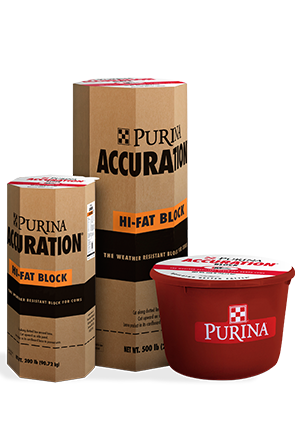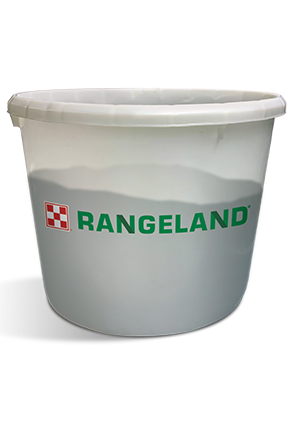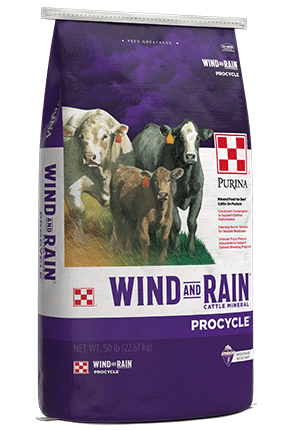
How to Prepare Cattle Water Sources for Winter
Management : Cow & Calf
Nutrition : Minerals
Nutrition : Supplements

Water is the most essential nutrient for cattle production. It’s used for regulating body temperature, growth, reproduction, lactation, digestion and many other bodily functions. And while we typically worry more about water intake in summer, it’s equally as important in cold weather.
For fall calving herds, water requirements go up drastically as lactation starts. Cows hit peak lactation right when water is at risk of freezing up. With spring calving herds, water access is key to avoid stress and long-term performance impacts to both the cow and unborn calf.
Here are a few tips to keep cattle drinking water in winter:
When using natural water sources, place feeding sites close to the water to encourage access and decrease the chance of water icing up, but far enough away to protect water quality.
Water sites should be well-drained to avoid mud and ice build-up, which can become a slipping hazard.
Automatic cattle waterers have several options to keep ice at bay, including insulated troughs and pipelines, electric and propane heaters, solar power, and heat tape or geothermic heat. An added benefit of these types of heated waterers is improved water temperature, leading to more optimal water intake by the animal.
Maintaining a continuous flow of water is another option for automatic cattle waterers to prevent ice build-up. But be aware of overflow issues. Set up a drain to remove excess water and only run continuous flow in preparation for and during inclement weather.
Managing ice with natural water sources is more of an art than a science. Water can get muddy if you chop ice too close to the bank, discouraging cattle from drinking. But, if you chop too far out, you increase the risk of slipping, which could lead to broken legs or lost pregnancies. Look for a happy medium to keep cattle safe while maintaining water quality.
When a winter storm rolls in, don’t be left without supplies like water heaters and other essential items. These sell out quickly when storms are looming. Make a checklist of must-have items and stock up long before temperatures start dropping.
Have a pre-storm plan in place and know how to implement it. Your plan could include tasks like performing regular maintenance, turning on water heaters and starting continuous flow on automatic cattle waterers.
When building a new site, think ahead and consider laying pipes deeper and using insulated pipes to prevent freezing. It will save you a lot of hassle down the road.
Does your cattle nutrition program stack up? Find out with a Proof Pays trial.
For fall calving herds, water requirements go up drastically as lactation starts. Cows hit peak lactation right when water is at risk of freezing up. With spring calving herds, water access is key to avoid stress and long-term performance impacts to both the cow and unborn calf.
Here are a few tips to keep cattle drinking water in winter:
Carefully consider water placement
During extreme cold, wind or moisture, cattle typically stand in a shelter for extended periods to conserve body heat. The easier it is to access water in shelter areas and near feed sources, the less likely cattle will go off water or burn body heat walking long distances to get water.When using natural water sources, place feeding sites close to the water to encourage access and decrease the chance of water icing up, but far enough away to protect water quality.
Water sites should be well-drained to avoid mud and ice build-up, which can become a slipping hazard.
Be proactive about ice management
The best way to manage ice is to prevent water sources from icing up in the first place.Automatic cattle waterers have several options to keep ice at bay, including insulated troughs and pipelines, electric and propane heaters, solar power, and heat tape or geothermic heat. An added benefit of these types of heated waterers is improved water temperature, leading to more optimal water intake by the animal.
Maintaining a continuous flow of water is another option for automatic cattle waterers to prevent ice build-up. But be aware of overflow issues. Set up a drain to remove excess water and only run continuous flow in preparation for and during inclement weather.
Managing ice with natural water sources is more of an art than a science. Water can get muddy if you chop ice too close to the bank, discouraging cattle from drinking. But, if you chop too far out, you increase the risk of slipping, which could lead to broken legs or lost pregnancies. Look for a happy medium to keep cattle safe while maintaining water quality.
Prepare for the unexpected
Those in the Midwest and North are pros when it comes to extreme winter weather. But in the warmer areas of the country, we aren’t always prepared for that once-every-10-years winter storm. But no matter where you live, the key is to have a plan.When a winter storm rolls in, don’t be left without supplies like water heaters and other essential items. These sell out quickly when storms are looming. Make a checklist of must-have items and stock up long before temperatures start dropping.
Have a pre-storm plan in place and know how to implement it. Your plan could include tasks like performing regular maintenance, turning on water heaters and starting continuous flow on automatic cattle waterers.
When building a new site, think ahead and consider laying pipes deeper and using insulated pipes to prevent freezing. It will save you a lot of hassle down the road.
Does your cattle nutrition program stack up? Find out with a Proof Pays trial.



